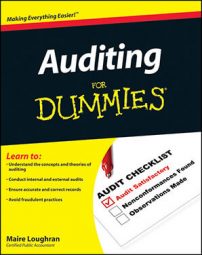If payroll fraud exists, it is likely to occur in one of three ways: During an audit you can use the following methods to detect all three circumstances of payroll error and fraud: through paying fictitious employees, employees who haven’t worked or employees who no longer work for the company. To find these types of errors when performing an audit take the following precautions:
Review payroll registers: A department manager needs to review and approve the payroll register, a summary of who’s getting paid and how much, prior to being forwarded to the payroll department. Check the registers looking for names of terminated employees, duplicate names, duplicate mailing addresses, duplicate Social Security numbers, or unusual hours worked. If the employee normally works Monday through Friday and you see some Saturday or Sunday hours, follow up.
Human resources needs to enter a termination date into the system because employees leaving a company usually receive their final check after their last day of work. A great accounting computer system allows payment up to but not after the termination date. After that date, any payment to the ex-employee should be stopped because the payroll clerk won’t be able to access the employee record. If a department manager sees payroll info for a terminated employee on the payroll register, the manager should correct it both at the department level and at the human resources level.
Examine canceled checks: Look at the front and back of any available paper checks clearing through the audit client’s bank for unusual looking checks and signatures. For example, if the payroll register has the employee as John E. Doe, and the check is payable to JE Doe, find out why. The check could possibly be cashed by nonemployee Jennifer Ellen Doe working in collusion with another employee.
Observe payroll processing: It’s always nice to be able to observe from soup to nuts the running of one complete pay period. You’ll be able to detect any breakdown in controls listed in the payroll procedure manual.
If you have the thrill of watching paychecks being handed out to employees, make sure that each employee has ID, such as a company badge, and that the name on the payroll check matches the badge. Check to see that each employee gets only one check and unclaimed checks are safeguarded.
The following separations of duties should eliminate any unauthorized payments (unless many employees are committing the fraud together):
Human resources should initiate updating any new or existing personnel records only after the updates have been appropriately authorized by the proper level of operating department management. The proper authorization level is something you’ll find out while questioning management and by reading the personnel policy manual.
Many small companies don’t have a formal human resources department, so this first step is handled by the accounting department. Even so, some sort of separation in duties should exist so that one payroll clerk isn’t responsible for both authorizing payroll changes and processing payroll.
As payroll clerks input the payment information, they should check that all new hires and pay raises have been authorized by human resources. Payroll clerks shouldn’t have the authority to change employee master file information. (The master file contains all payroll-related facts about the employee such as name, wage, and withholding.) So if a payroll clerk receives a payroll register with info not in the system, he’ll have to contact human resources to see what’s up with the orphan employee.

